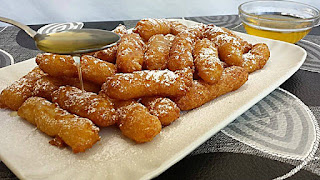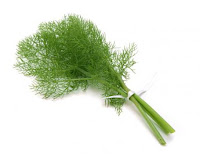In Sicily, as in the rest of the world, it's around the dinner table that friends and family gather together to spend Christmas among laughter, stories, games and lavish dinners. The island housewives, even the younger ones with less and less time available, divided between work and family, spend whole days to prepare delicious dishes, which are the real stars of this holiday season and whose recipes are handed down from mother to daughter by generations. Among an incredible variety of delicacies, this year I decided to proposer you a typical Christmas recipe from Catania but now widespread throughout the island. It is, in practice, a stuffed savory pie: the "schiacciata" or, as they say in dialect, "scacciata". There are several variants of this recipe: some stuffed with tomato, anchovies and tuma (a typical cheese of the island's north-east), others with cauliflower and sausage. I have decided to follow the traditional recipe, the one at Christmas and New Year's triumphs on the tables of the whole island.
The recipe is a bit 'long and complex, especially the preparation of the dough requires a bit' of practice, but I will guide you step by step and also, to shorten the time, I suggest you start preparing the day before some ingredients that will serve for the filling: potatoes, sausage and broccoli.
 Start to prepare broccoli. After washing, cut the tops: sliced the bigger ones but leave the smaller ones whole. Boil a pan with water plenty of salt (2 tablespoons), when the water bubbles soak the broccoli for a few minutes (max 5 minutes). Then remove them and drain in the colander, where you will leave them to cool. Now started to peel the potatoes, wash and cut into slices. Preheat the oven to 200 ° C and let preheat. In the meantime, take a baking dish and arrange the slices of potatoes, sprinkle with the tomato puree (4-5 tablespoons), add water (100 ml), 1½ tablespoon of oil, 3 teaspoons of salt. After mixing everything, bake the pan and simmer for about 20 minutes. Halfway through cooking, take care to turn the potatoes but gently, to prevent them grinted. Once cooked, remove from oven and let cool in a colander. Repeat the same operation for the sausage: after having peeled and crumbled, put it in a baking pan by adding 3 tablespoons of tomato sauce and 1 glass of water. Bake, always cook at 200 °
Start to prepare broccoli. After washing, cut the tops: sliced the bigger ones but leave the smaller ones whole. Boil a pan with water plenty of salt (2 tablespoons), when the water bubbles soak the broccoli for a few minutes (max 5 minutes). Then remove them and drain in the colander, where you will leave them to cool. Now started to peel the potatoes, wash and cut into slices. Preheat the oven to 200 ° C and let preheat. In the meantime, take a baking dish and arrange the slices of potatoes, sprinkle with the tomato puree (4-5 tablespoons), add water (100 ml), 1½ tablespoon of oil, 3 teaspoons of salt. After mixing everything, bake the pan and simmer for about 20 minutes. Halfway through cooking, take care to turn the potatoes but gently, to prevent them grinted. Once cooked, remove from oven and let cool in a colander. Repeat the same operation for the sausage: after having peeled and crumbled, put it in a baking pan by adding 3 tablespoons of tomato sauce and 1 glass of water. Bake, always cook at 200 ° Cfor about 20 minutes, stirring a few times. Then, remove from oven and let cool. Finally, now that broccoli are very cold, put on a frying pan with 2-3 tablespoons of extra virgin olive oil and one clove of garlic. When the garlic is golden, remove it and add the broccoli. Brown them for a few minutes, turning them with extreme delicacy. Remove them from the pan and let cool in a colander.
Cfor about 20 minutes, stirring a few times. Then, remove from oven and let cool. Finally, now that broccoli are very cold, put on a frying pan with 2-3 tablespoons of extra virgin olive oil and one clove of garlic. When the garlic is golden, remove it and add the broccoli. Brown them for a few minutes, turning them with extreme delicacy. Remove them from the pan and let cool in a colander. Now let us dedicate ourselves to the final part of the recipe: the preparation of the dough, which I suggest you make the day after cooking the potatoes, sausage and broccoli. First you dissolve the yeast in lukewarm water (80 ml) and sugar (2 teaspoons). Now in a bowl or on a pastry board the flour and give them the shape of a fountain, topped with a recess in which you will add the lard and the water in which you have dissolved the yeast. Mix with your hands and gradually add the water required. Only at the end add salt (2 tablespoons). I recommend you add salt only at the end, so that it does not come into contact with the yeast, which would block the leavening. Knead the dough until its appearance is smooth, elastic, but mainly dry: should not remain stuck on your hands and give it the shape of a ball. Now oil a bowl and arrange inside the dough, cover with a tea towel. Let rise for around 1½ hours, until the ball has doubled in volume. In the meantime, prepare the onions: wash, remove the skin and cut into thin strips, and the olives: cut them in half, remove the core and cut into small pieces.
Now let us dedicate ourselves to the final part of the recipe: the preparation of the dough, which I suggest you make the day after cooking the potatoes, sausage and broccoli. First you dissolve the yeast in lukewarm water (80 ml) and sugar (2 teaspoons). Now in a bowl or on a pastry board the flour and give them the shape of a fountain, topped with a recess in which you will add the lard and the water in which you have dissolved the yeast. Mix with your hands and gradually add the water required. Only at the end add salt (2 tablespoons). I recommend you add salt only at the end, so that it does not come into contact with the yeast, which would block the leavening. Knead the dough until its appearance is smooth, elastic, but mainly dry: should not remain stuck on your hands and give it the shape of a ball. Now oil a bowl and arrange inside the dough, cover with a tea towel. Let rise for around 1½ hours, until the ball has doubled in volume. In the meantime, prepare the onions: wash, remove the skin and cut into thin strips, and the olives: cut them in half, remove the core and cut into small pieces. At this point, take the dough and divide it in two parts. Roll it out with a rolling pin on a floured work surface giving it the shape of the pan you wish to use: round or rectangular and high about 1 cm. I suggest you leave a puff pastry slightly larger than the other, it will need to close the side of the schiacciata. Now grease the baking dish with oil and arrange on top of one of the puff pastry, raising the side edges, they'll need to close. Now add the filling you will place in layers: first the Tuma cheese (I suggest you use the Tuma at room temperature), then the potatoes, the broccoli, the sausage, finally again Tuma cheese.
At this point, take the dough and divide it in two parts. Roll it out with a rolling pin on a floured work surface giving it the shape of the pan you wish to use: round or rectangular and high about 1 cm. I suggest you leave a puff pastry slightly larger than the other, it will need to close the side of the schiacciata. Now grease the baking dish with oil and arrange on top of one of the puff pastry, raising the side edges, they'll need to close. Now add the filling you will place in layers: first the Tuma cheese (I suggest you use the Tuma at room temperature), then the potatoes, the broccoli, the sausage, finally again Tuma cheese.Sprinkle all with onions, olives and freshly ground black pepper. When you place the ingredients, let the free edges, about 2 cm. Now cover with the other puff pastry and try to seal the edges well, rolling them. Perforated with a toothpick the surface of the puff pastry, so as to let out the water vapor during cooking. Cover your pan with a cloth and let stand for 30-40 minutes. Meanwhile make preheat the oven to 200 ° degrees static. Spent half an hour, bake the pan and cook for about 40 minutes. After you come out the cake from the oven, brush with oil, further cover with a cloth and let stand for 20 minutes.
For those with limited time, you can buy at the bakery a loaf of already leavened dough. I advise you to taste the pasta lukewarm, but cold is absolutely exquisite too. You can serve it as an appetizer or a main dish and it is ideal for the palates of everyone: young, children and vegetarians. Hence a Christmas in the spirit of the riot of taste and also with an eye to saving, which never hurts. To enhance the flavor of crushed I recommend a delicate white, well chilled, or totally counter to that a good red full-bodied but not too fruity
Doses for 8 people:
For dough:
1 kilograms/2½ lb of flour of durum-wheat semolina (if you want a dough less "rustic" I recommend you use 500 grams of durum-wheat semolina flour and 500 grams of flour '00)
25 grams/1 oz of yeast
sugar (2 teaspoons)
lard (1 tablespoon)
salt
lukewarm water to taste
For the stuffing:
http://cocciudamuri.it/index.php/selezionati-da-cocciu-d-amuri/vini-e-spumanti/giffaro-cabernet-sauvignon-syrah.html
4 potatoes
1 kilograms/2½ lb of fresh pork sausage
800 grams/1lb 12 oz of broccoli tops (small ones whole, the larger ones sliced)
600 grams/1 lb 5 oz of Tuma cheese (to be used at room temperature, in case take off it from fridge 2/3 hours before use)
2 white onions tender, cut into thin strips
tomato sauce (8 tablespoons)
50 grams/2 oz of black olives
1 clove of garlic
Freshly ground black pepper
Salt
Extra virgin olive oil
For your shopping we suggest:
http://cocciudamuri.it/index.php/selezionati-da-cocciu-d-amuri/olio-extra-vergine-d-oliva.html
http://cocciudamuri.it/index.php/selezionati-da-cocciu-d-amuri/vini-e-spumanti/giffaro-cabernet-sauvignon-syrah.html
http://cocciudamuri.it/index.php/selezionati-da-cocciu-d-amuri/vini-e-spumanti/lissandrello-cabernet-sauvignon.html
And, in particular, for your purchases and how original Christmas ideas recommend the packages of carefully selected typical Sicilian products:
http://cocciudamuri.it/index.php/confezioni_cocciudamuri
















































